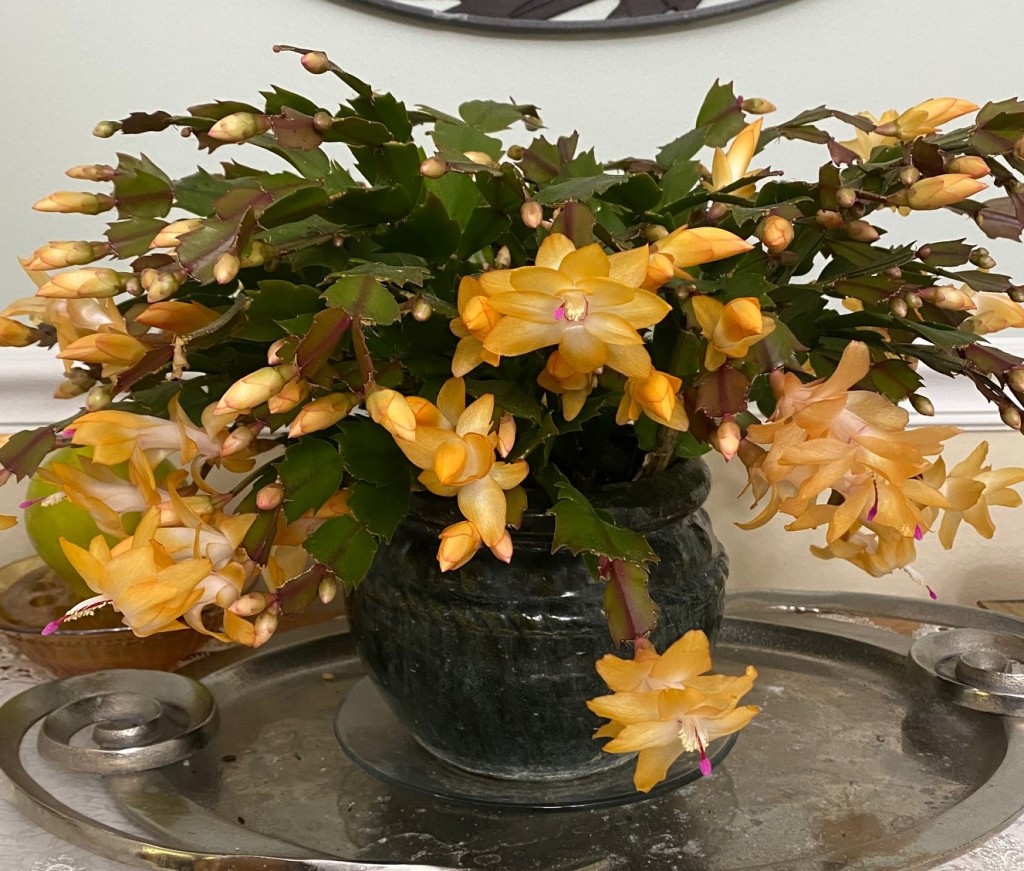
January is my time to pay more attention to my houseplants. Crowded pots need dividing and give me the opportunity to share plants with friends. Some folks even sell their newly propagated plants on social media sites hopefully for enough money to cover the potting soil and pots. If you are using old pot, wash them with a 10% bleach and water solution to eliminate any old plant diseases. Use fresh potting soil. I buy a larger bag from my local independent garden center. Woodland Gardens near me sells their own bagged mix I love. It is well draining and I have great success with it. Well draining is key to keep the roots from being too wet and giving opportunity for root rot diseases to invade.
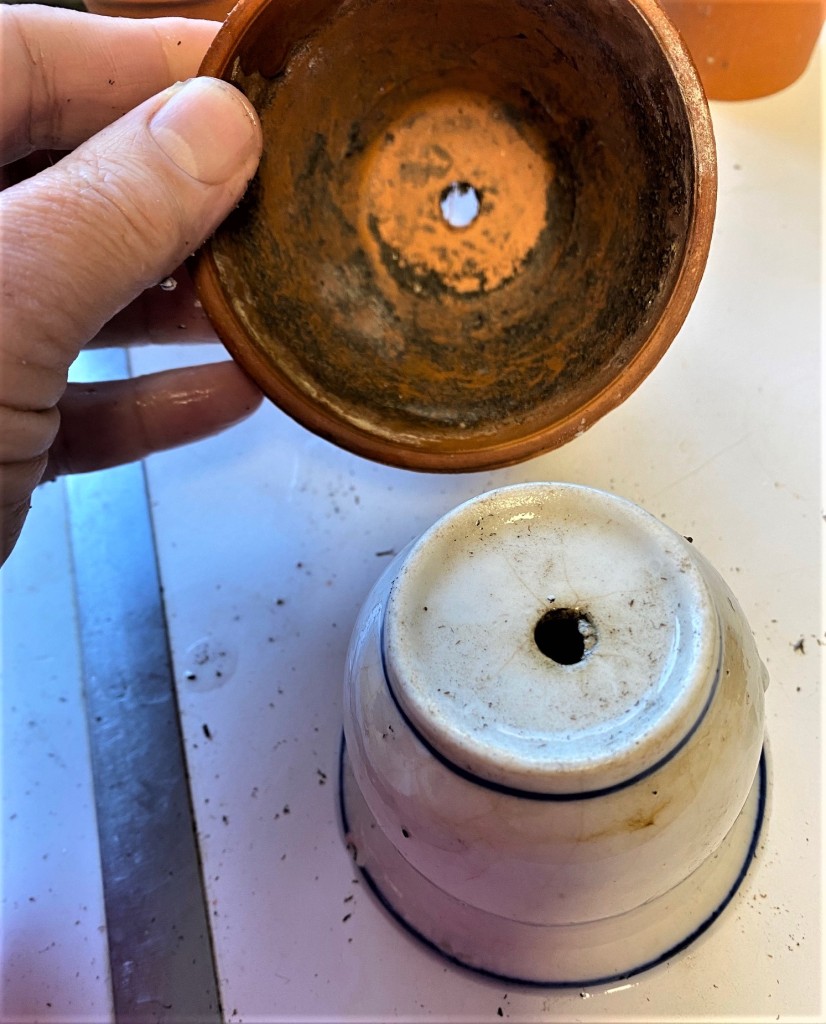
Pots need to have drainage holes in the bottom to allow excess water to drain into a saucer or dish. Always poor off any water from the saucer after watering. Never let the pot sit in water or the dreaded root rot can happen.
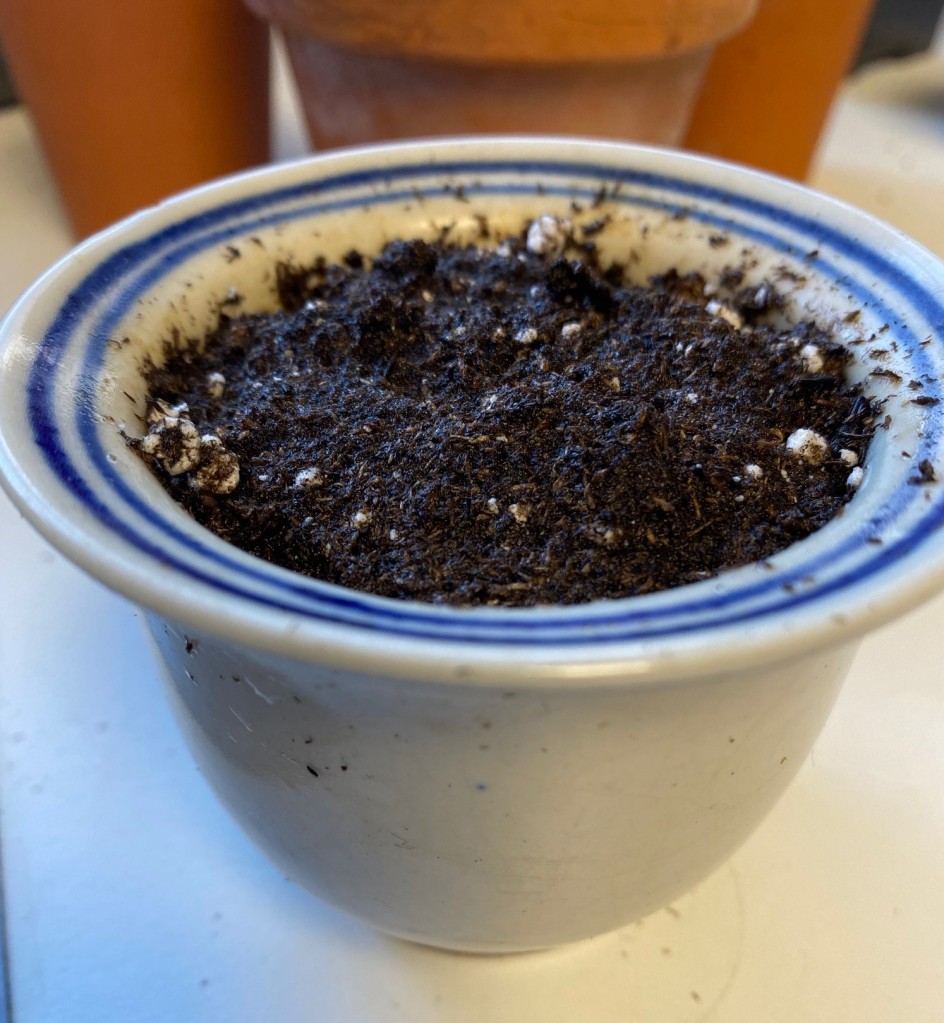
Use a bowl to hydrate the dry potting mix from the bag. Give it a few minutes to soak the water, then spoon or trowel it into the pot being used as the home for the new plant. Fill the pot to within a 1/4 inch of the top lip of the pot. This ensures good air movement over the surface of the soil and leaves just enough space so that the water will run out of the planter over its edge.
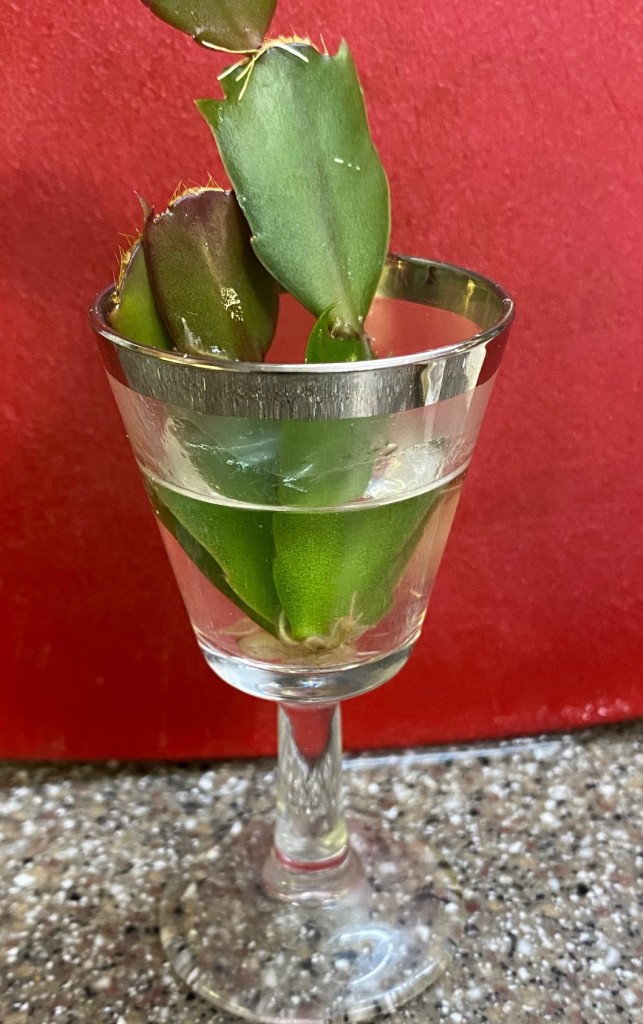
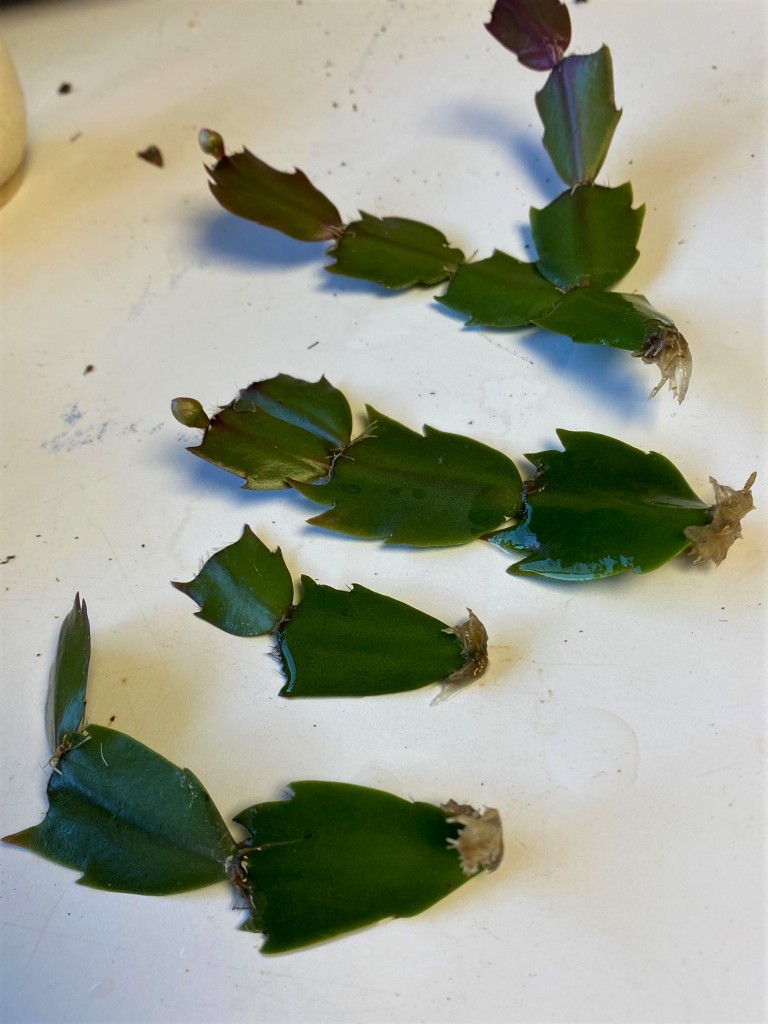
From the Christmas cactus above, I twisted off a few leaf segments. I prefer to set them in water for a few weeks to initiate roots to grow, then plant them in potting mix. Another option is the stick the cuttings directly into moistened potting mix allowing the leaf pieces to set roots directly in the soil and container. The soil must be kept damp until the roots have grown enough to anchor in the soil. Both ways work.
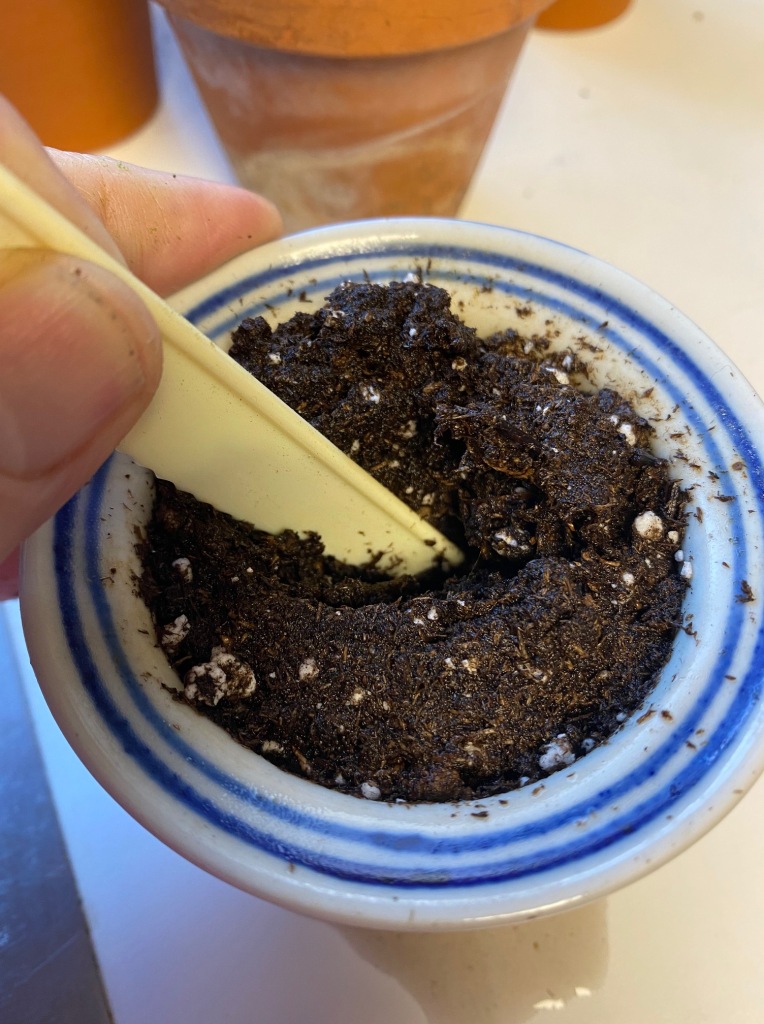
Make a hole to insert the cutting or cuttings.
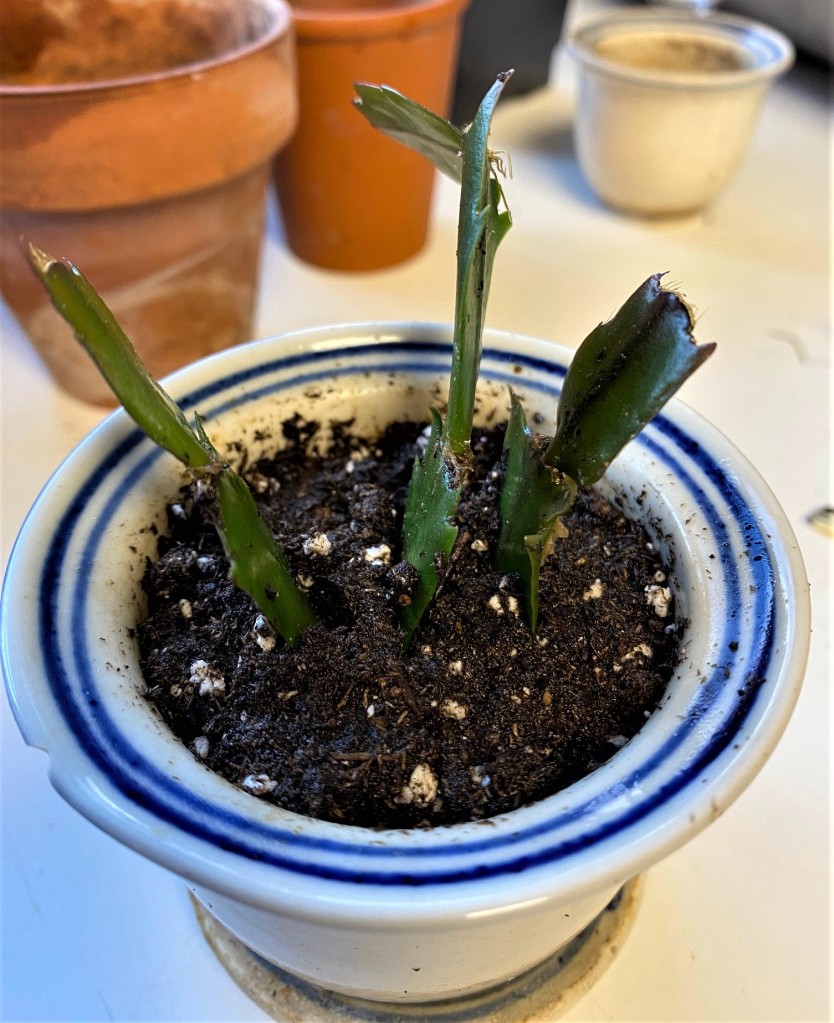
It may look a little sparse in the above plant, but it will fill in soon.
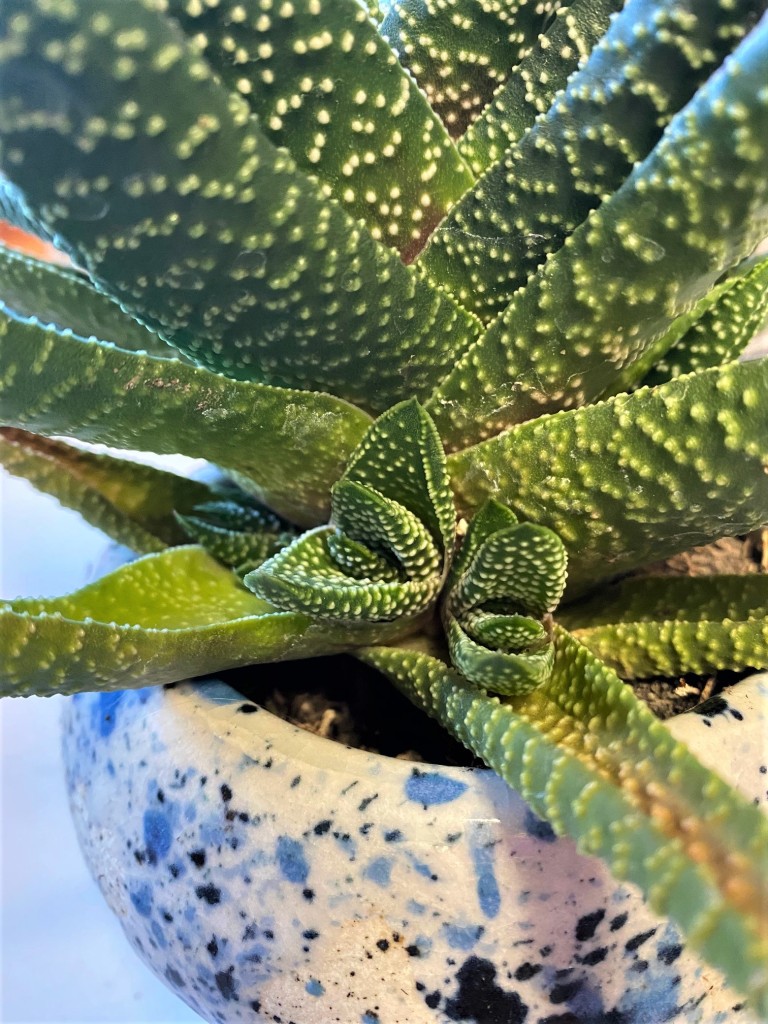
Haworthia is a wonderful succulent that sets baby plants at its base. These baby plants can be twisted off the mother plant and stuck directly in moistened soil. Again keep soil moist to develop a new root system. Examine the mother plant to see if it needs repotting if it is root bound. Sometimes just removing the newly produced babies will give the old plant enough room without repotting.
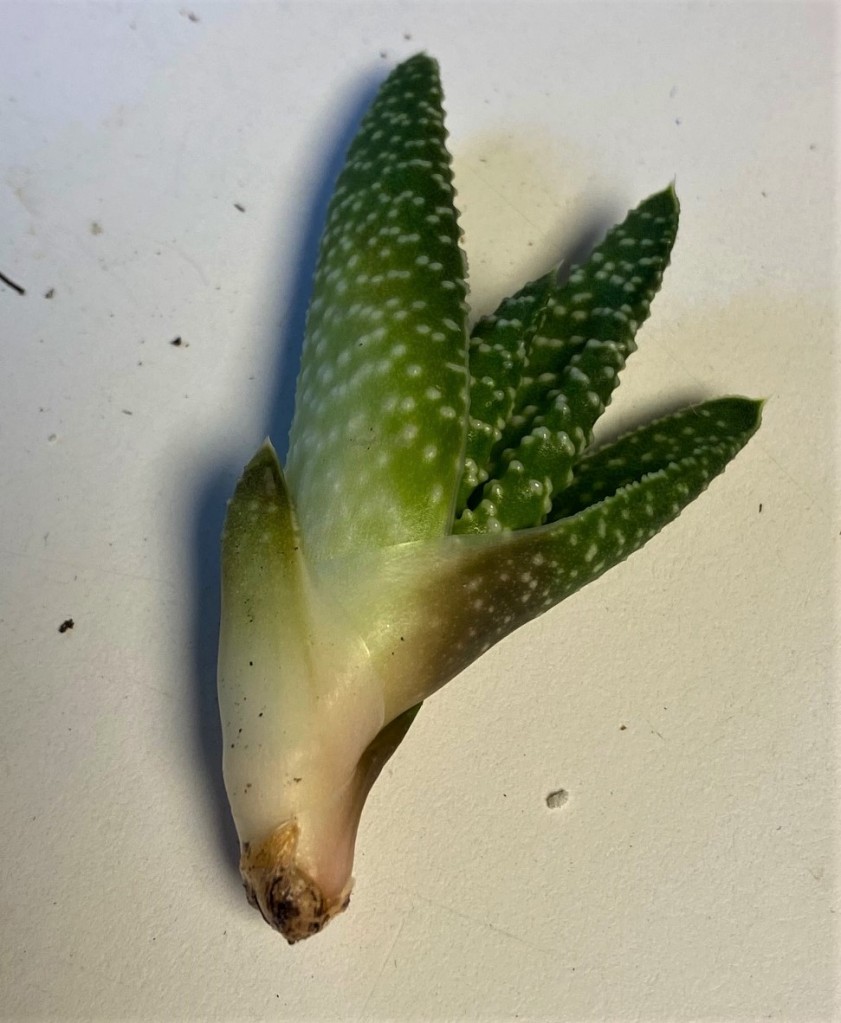
Above photo shows the Haworthia baby right after being twisted off of the mother plant. See the attachment point where new roots will emerge once replanted.
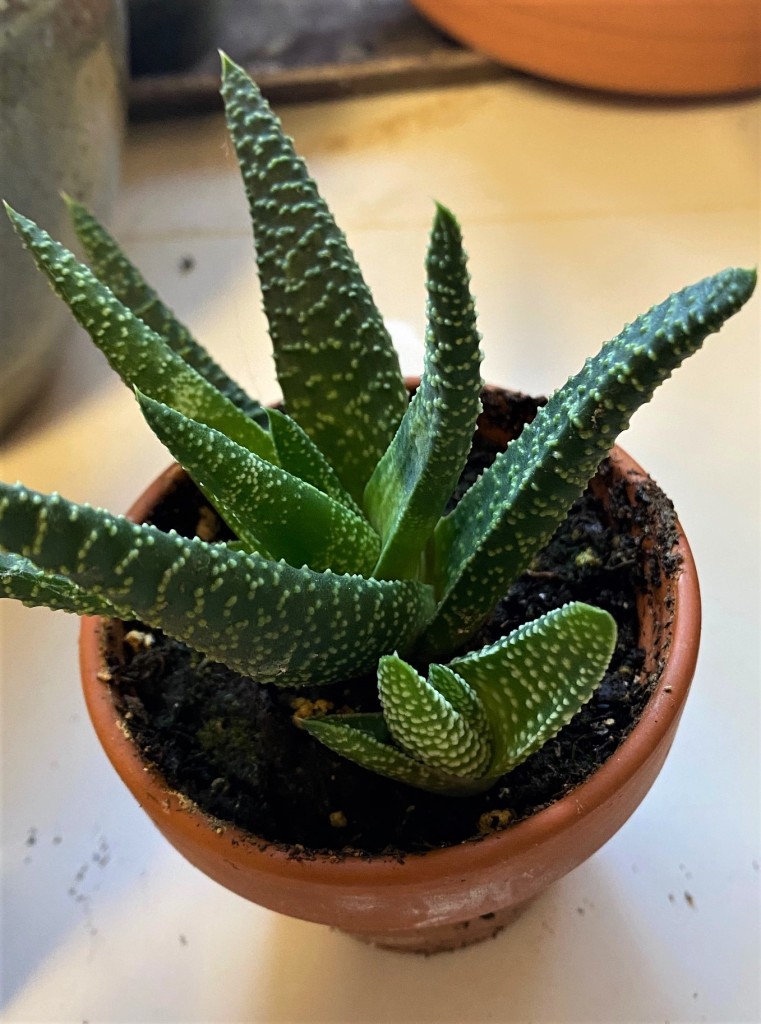
Keep damp to get roots to grow. Rooting hormone can be used on the bottom tip, but not necessary as they root so easily.
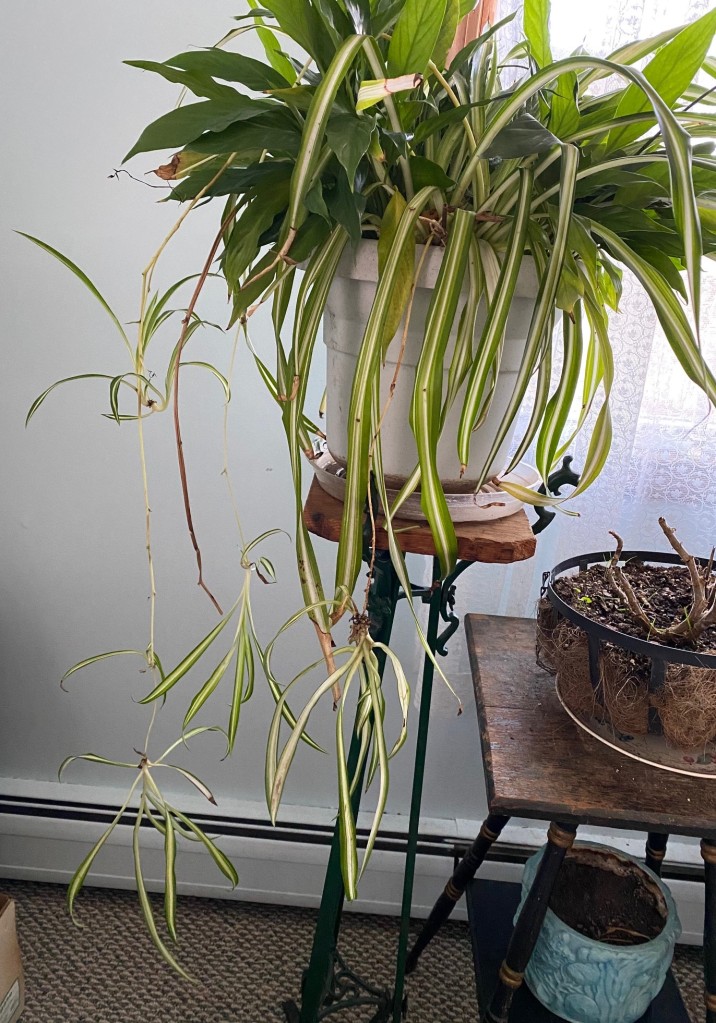
Spider plants send out long shoots with new plants at the end. Shoot growth will continue to grow adding more baby plants as they extend their reach. In the wild, the new plants will land on a fertile spot and anchor in via new roots produced from the baby plant. As a houseplant these babies can be cut from the shoot and planted directly in moist potting soil or rooted in water. Spider plants are very easy to grow and propagate in vegetatively.

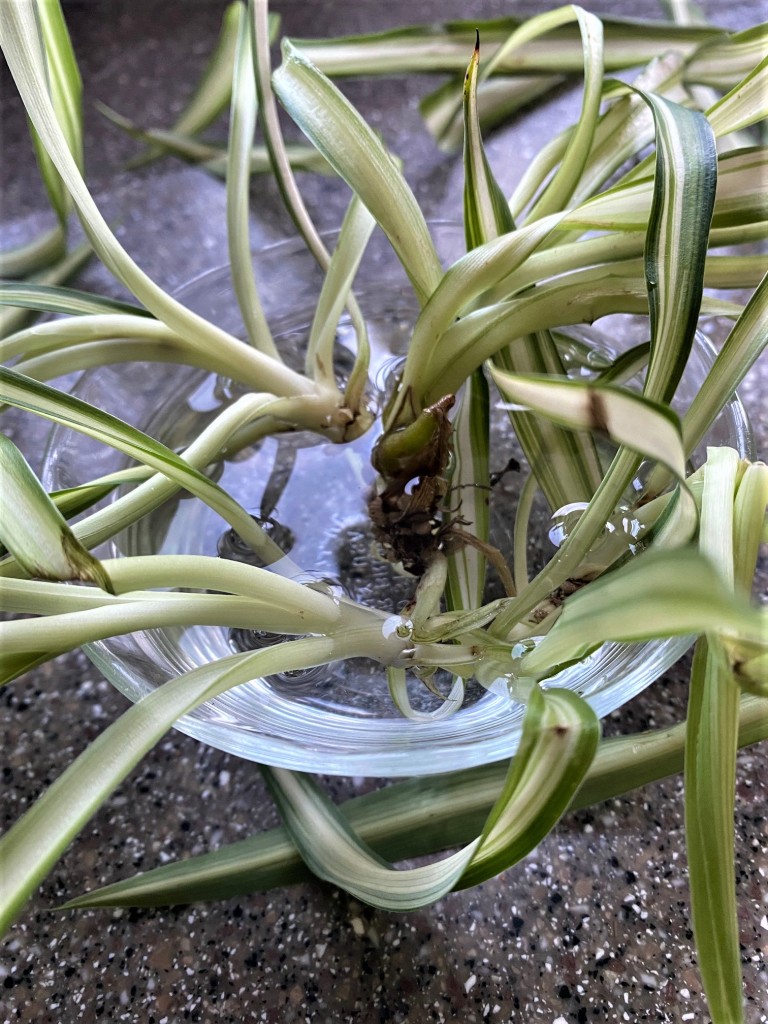
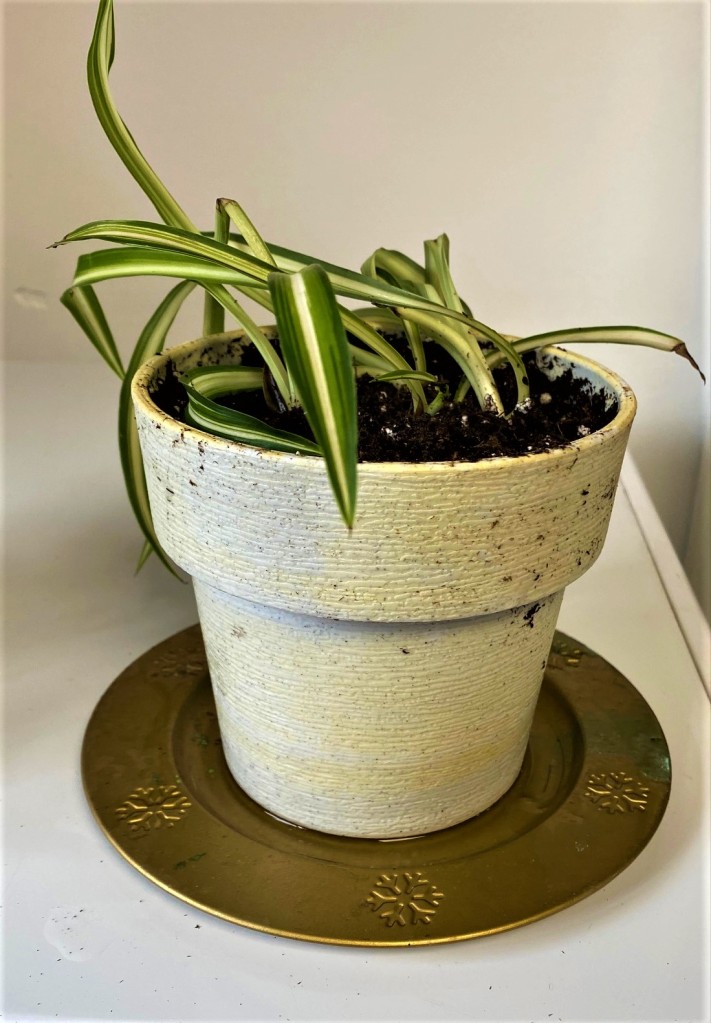
by Carol Quish.
